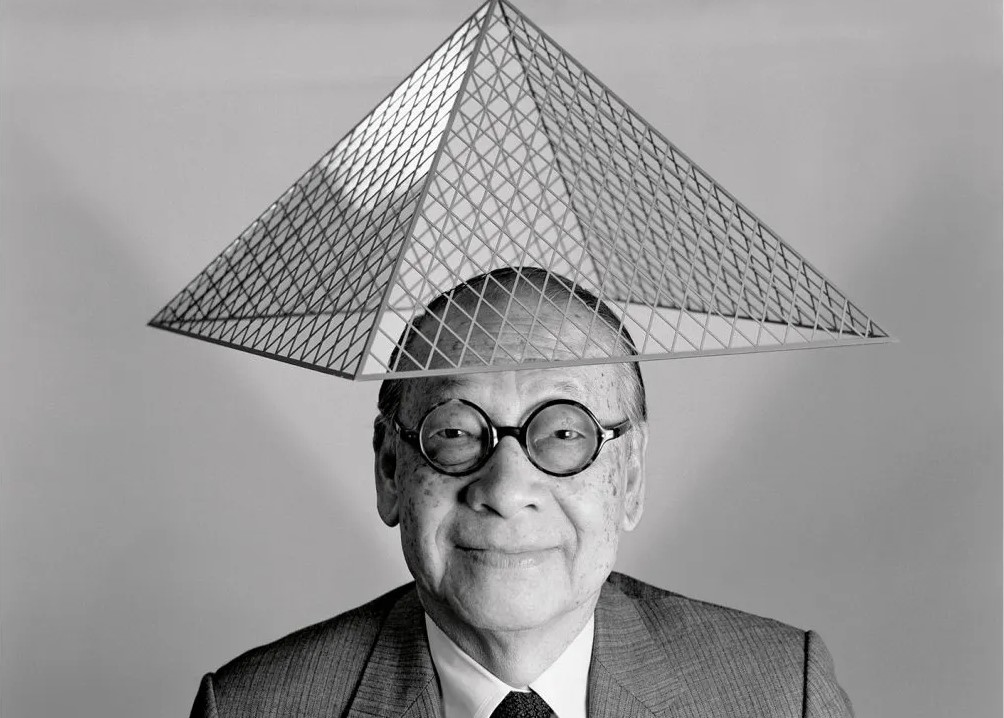The last representative of high modernist architecture: Who is Ieoh Ming Pei?
One of Ieoh Ming Pei's greatest works was the Louvre Museum Pyramid. Expressing a completely abstract design, the Louvre Pyramid is a pyramid made of glass and metal located in the courtyard of the Louvre Museum in Paris. The larger of the four pyramids, completed in 1989, is the main entrance of the museum.

I. M. Pei, better known by his initials, is a Pritzker Architecture Prize-winning Chinese-American architect. It is known as the last representative of high modernist architecture. One of Ieoh Ming Pei's greatest works is the pyramid made of glass and metal in the courtyard of the Louvre Museum in Paris.
Ieoh Ming Pei was born on April 26, 1917, in Canton City (new name Guangzhou) in Guangdong province, China. His father was a banker who became a director of the Bank of China and president of the Central Bank of China.
Ieoh Ming Pei (April 26, 1917 – May 16, 2019) was a Chinese-American architect. Born in Guangzhou into a Chinese family, Pei drew inspiration at an early age from the garden villas at Suzhou, the traditional retreat of the scholar-gentry to which his family belonged. In 1935, he moved to the United States and enrolled in the University of Pennsylvania's architecture school, but quickly transferred to the Massachusetts Institute of Technology. Unhappy with the focus on Beaux-Arts architecture at both schools, he spent his free time researching emerging architects, especially Le Corbusier.
After his family moved to Hong Kong, Pei lived there until he finished secondary school. They later moved to Shanghai because his father accepted a position at the Bank of China. He completed his primary education at St Paul's College in Hong Kong. He then continued his education at St. John's University in Shanghai for a year.
When Ieoh Ming Pei was 18 years old, he enrolled in the Faculty of Architecture at the University of Pennsylvania to study architecture in the USA. He then received his B A degree in architecture from the Massachusetts Institute of Technology (MIT) in Boston, Massachusetts, in 1940. He also became a member of the National Protection Research Committee in Princeton, New Jersey, shortly after studying at Harvard School of Design.
He started his master's degree at Harvard University in 1944 and completed it in 1946 under the architect Walter Gropius, who was related to the Bauhaus School.
In 1946 he became an assistant professor at Harvard University. He won the Wheelwright Traveling Fellowship in 1951 and became a United States citizen in 1954.
After 1948, Pei worked on many major architectural and planning projects throughout the United States, often designing buildings in the style of architect Ludwig Mies van der Rohe.
Ieoh Ming Pei founded his own architectural firm in 1955, first named “I. M. Pei and Associates”, and changed its name to “Cobb Freed & Partners” in 1989 when partners James Ingo Freed and Henry N. Cobb joined.
I.M. Pei won the Pritzker Architecture Prize in 1983 for his work at the US National Gallery of Art.
One of Ieoh Ming Pei's greatest works was the Louvre Museum Pyramid. Expressing a completely abstract design, the Louvre Pyramid is a pyramid made of glass and metal located in the courtyard of the Louvre Museum in Paris. The larger of the four pyramids, completed in 1989, is the main entrance of the museum.
leoh Ming Pei completed his studies and retired in 1990.
Ieoh Ming Pei, who married Eileen Loo in 1942, died in 2014. He has 4 children, both sons named Chien Chung Pei (b.1946) and Li Chung Pei (b.1950) are architects.
Ieoh Ming Pei uses steel, concrete, glass, and rock in his works. The successful architect is among the leading architects of the 20th century, with his works created in various parts of the world.
Most of his works appear as daring and simple-shaped structures that resemble huge pieces of sculpture.
